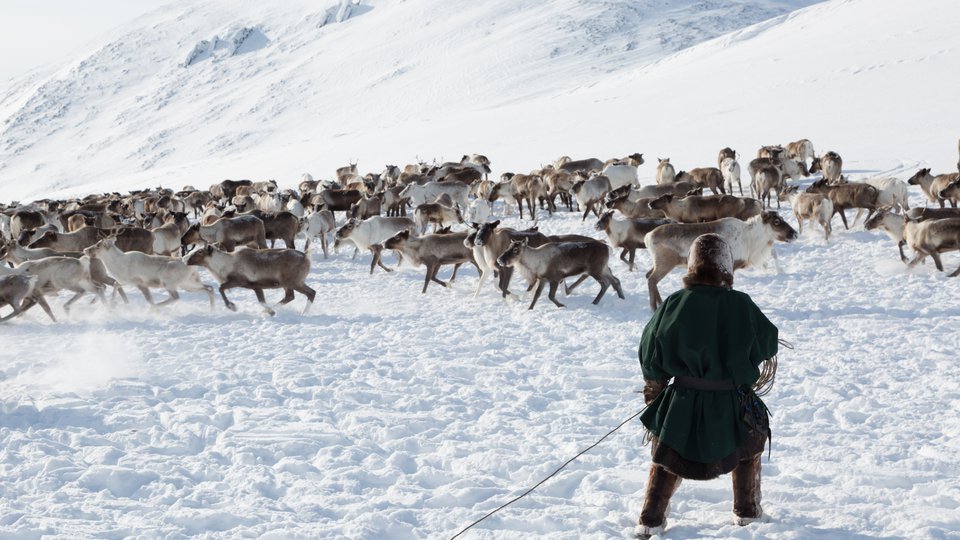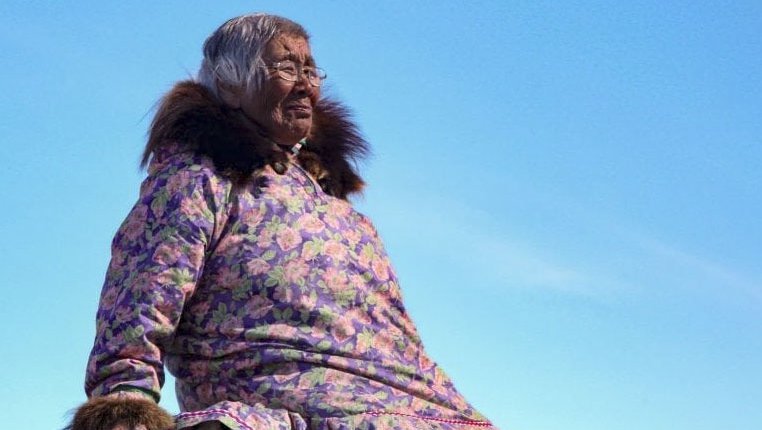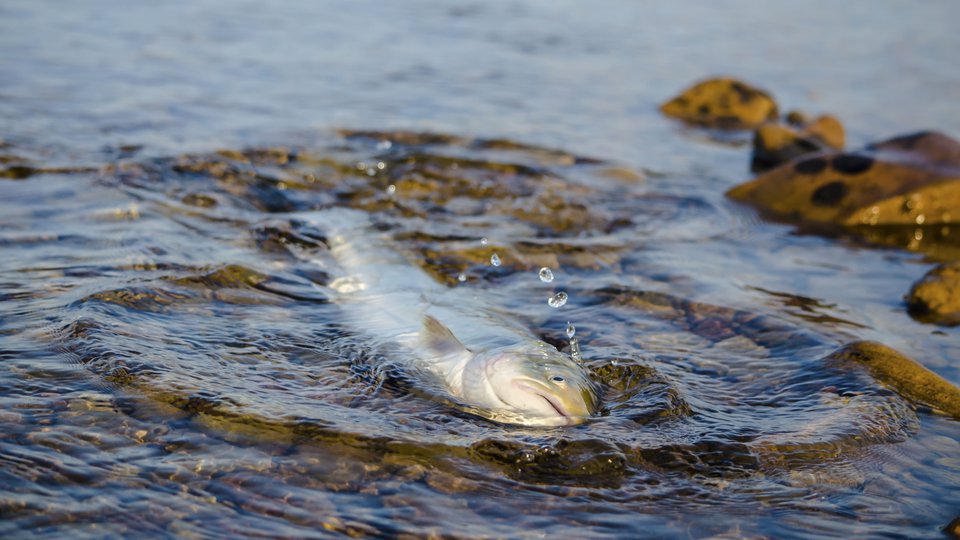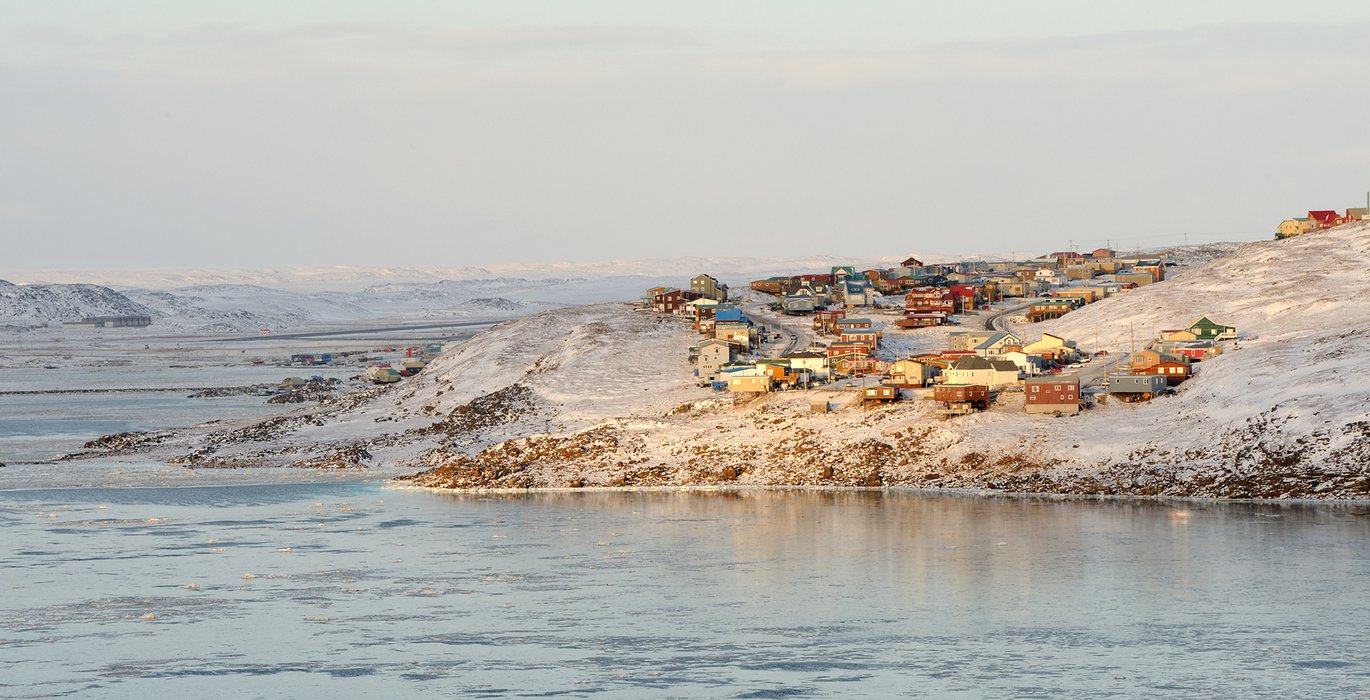
n the Arctic, “hunting is what saved the Inuit from starvation”, says Inuit activist Leesee Papatsie. Even so, hunger has been a constant companion for native peoples in the north. “For this reason”, Papatsie says, “the Inuit never forget the value of food”.
To find ways to build a resilient food system in the face of new challenges, the Inuit have begun to self-organize in new ways. Maintaining their ancient knowledge could help them to tackle modern challenges, whether that’s diabetes or trade across modern borders.
But things have changed for the soft-spoken activist and her community in northern Canada. A population boom mostly driven by oil exploration has increased the demand for food. But supply struggles to keep up, even in the best-connected areas where cargo ships travel twice a year.
“We’ve always had high prices in the North, that’s to be expected”, Papatsie says. That means people now resort to cheap food that is less nutritious but fills the stomach, such as pasta or rice.
The problem extends beyond the Arctic Circle. People are transitioning from bush to supermarket food all over the world. But in the Arctic they continue to need both, even as policy is not dealing with those food categories equally. Rapid changes in their food systems due to globalization and global warming – the Arctic is experiencing the effects of climate change fastest – can lead to malnutrition and the loss of Indigenous knowledge.
To find ways to build a resilient food system in the face of new challenges, the Inuit have begun to self-organise in new ways. Maintaining their ancient knowledge could help them to tackle modern challenges, whether that’s diabetes or trade across modern borders.
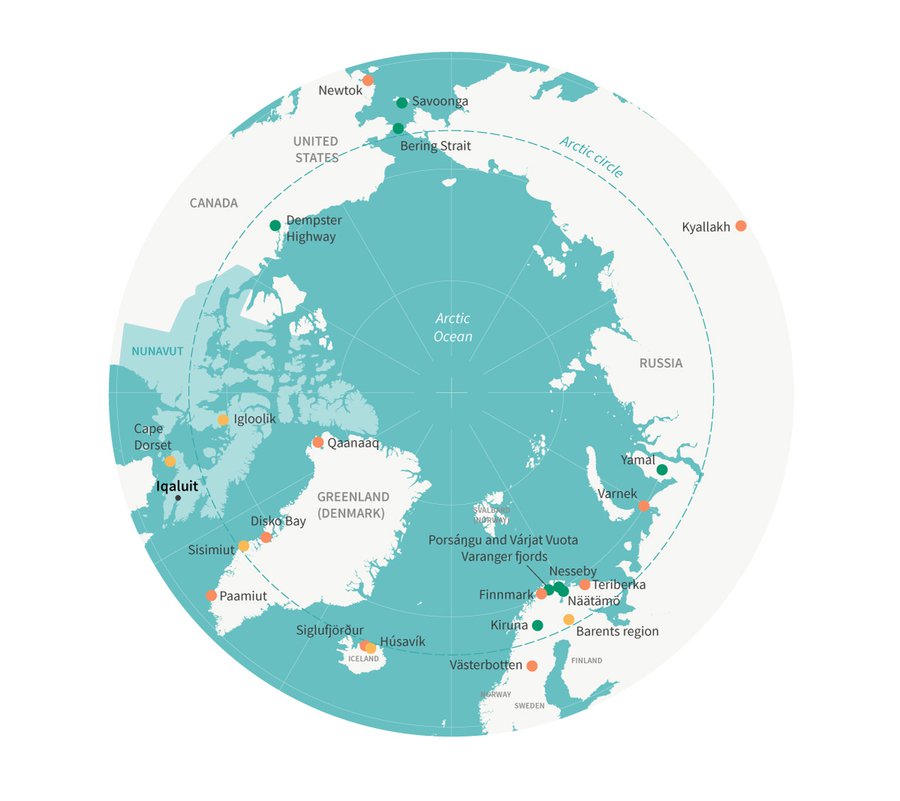
Indigenous people in Nunavut have protested imported food prices over the past few years, as their food systems have shifted. Recent case studies from elsewhere in the Arctic explore how communities are facing a variety of challenges (http://www.stockholmresilience.org/research/research-streames/complex-adaptive-systems/arctic-resilience-report-2016.html). Map: E. Wikander/Azote (adapted from Arctic Resilience Report 2016).
Food is expensive, in part because it traveled a long distance and transportation costs are passed on to the consumer. Iqaluit’s nearly 8,000 inhabitants, most of whom are of Indigenous origins, can only hope the food gets there before the rotting sets in.
Rotten food is a common sight on the shelves of shops in the Canadian territory of Nunavut. Its capital, Iqaluit, faces a remote bay that is accessible by sea in summer, and only by plane in winter.
Food is expensive, in part because it traveled a long distance and transportation costs are passed on to the consumer. Iqaluit’s nearly 8,000 inhabitants, most of whom are of Indigenous origins, can only hope the food gets there before the rotting sets in.
Rotten food is a common sight on the shelves of shops in the Canadian territory of Nunavut. Its capital, Iqaluit, faces a remote bay that is accessible by sea in summer, and only by plane in winter.
Food is expensive, in part because it travelled a long distance and transportation costs are passed on to the consumer. Iqaluit’s nearly 8,000 inhabitants, most of whom are of Indigenous origins, can only hope the food gets there before the rotting sets in.
But one day, Papatsie recalls, “someone from a smaller community turned up in Iqaluit and just said ‘I am so sick of the store selling us rotting food at a really high price, I am just going to go stand outside the store’.”
And so the protests began. Papatsie started a Facebook group, Feeding My Family, in 2012, which now counts more than 21,000 members from across Nunavut. The online community organizes protests and lobbies politicians to take action against food insecurity. It also shares tips on how to complement a diet based on imported foods such as crisps, soda, or rice with local foods such as fish.
As nutrition falls by the wayside, the movement Papatsie started has grown into a vocal and dynamic community seeking to bridge traditional food knowledge and cash-based economy. But the question remains: can native Arctic people continue to feed themselves in the face of rapid and already apparent climate change?
The disruptive spread of modern diets
A growing number of people who live in northern Canada are considered “food insecure”. When a can of pasta sauce goes for CAD$16 (about £10), a box of diced pears costs nearly CAD$12 (£8), and food rots on the shelves, it’s no wonder hunger is a problem in Arctic communities like Nunavut. Seven out of ten Inuit children in Nunavut live in a food insecure household, and a quarter skip meals or go hungry.
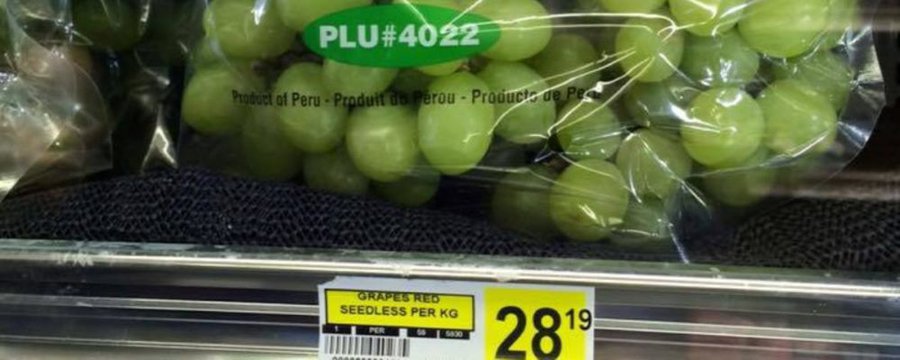
A photo posted in the Facebook group “Feeding My Family” shows an example of high prices for fresh food in Nunavut. Photo: M. Hoyt/Facebook.
Native families find themselves ever more reliant on shipped-in foods, even as they continue their traditional practices. Heavy dependence on imports is intensifying with population growth, carrying huge risks to the region’s food system. Fuel-price fluctuations make the price of staple foods volatile and skew diets towards unhealthy patterns. Dry and processed foods – rich in salt, sugar, and preservatives – are cheaper and more abundant in shops because they can travel long distances without spoiling.
Despite the work of activists and government programs aimed at reducing the cost of healthy food, such as Nutrition North Canada, people in northern Canada still struggle to put enough food on their plates, and what they buy in supermarkets is often fattening and unhealthy.
Diabetes is rife among Inuit communities, and programs to promote healthy eating in schools and community centres are generally short lived. While pasta and rice are good “stomach fillers”, as Papatsie calls them, and vegetables or fruit are still a relatively recent addition to northern diets, many simply don’t know how to cook with them.
Indigenous people in the Arctic take pride in the flexibility and hardiness of their ancestors, and continue to hunt and practice other traditions. One of those is sharing their “country food”, such as caribou, seal, or whale, with their neighbours in need. But sticking to tradition is becoming increasingly challenging in various parts of the region, as native people lose traditional skills and hunting rights, or because changing climate conditions are changing the food resources available in the region.
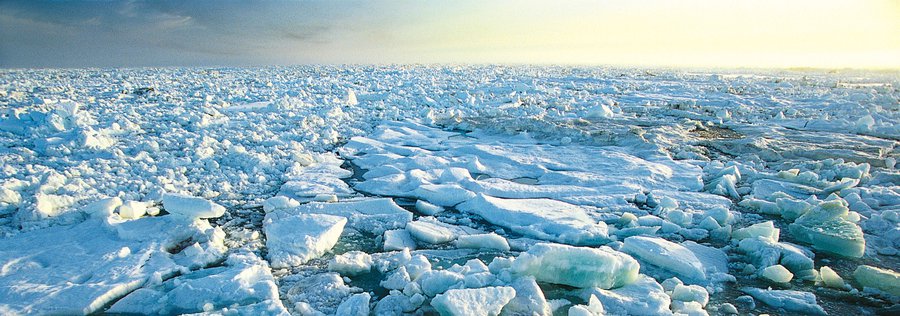
Every summer, Arctic sea ice coverage shrinks with a warming climate. That global driver has local knock-on effects for ecosystems and the people that rely on them. Photo: ESA.
Arctic diets under climate change
Climate change has been identified as one of the major threats to traditional diets in the North. Erratic seasons change animals’ migratory patterns and affect their survival through the emergence of new diseases, affecting several key food sources for Indigenous peoples, such as caribou, berries, seals, or whales.
“Communities are responding by changing where and when they hunt and using different technologies,” says Todd Brinkman, an assistant professor at the University of Alaska Fairbanks who studies the interactions between humans and wild ecosystems.
For example, he says, “the Wainwright community on the north-west coast of Alaska completely changed the way they hunt bowhead whales because of instability of the sea ice.”
Traditionally, the locals used to hunt whales in the spring, walking on ice, but the sheets were getting thinner by the year and increasingly unsafe. “So they began hunting in autumn, when the whales were coming back through their southern migration path, and even though that requires different gear and different technology, the hunters have adapted quickly”, Brinkman says.
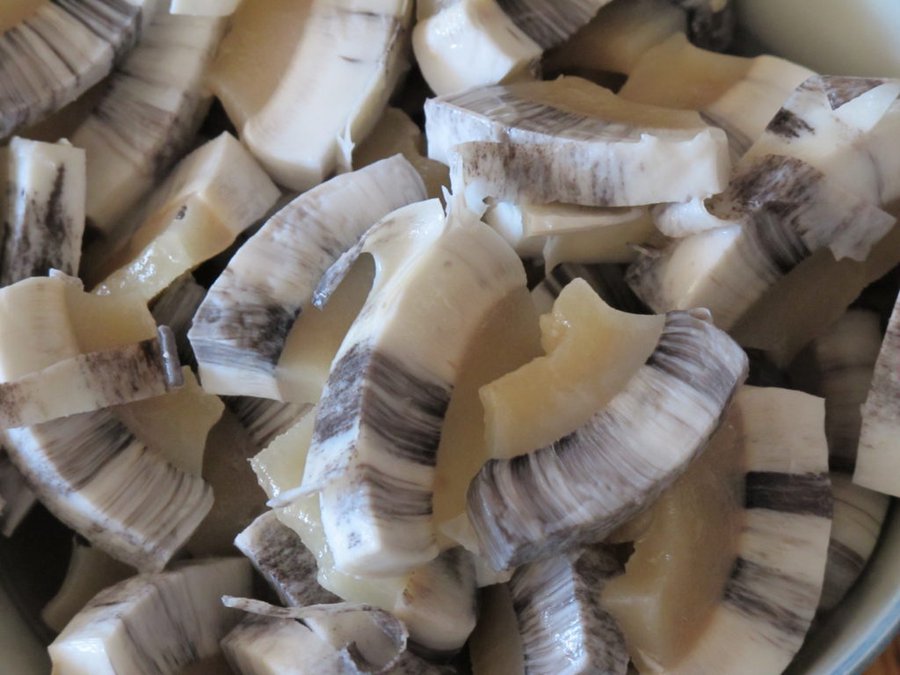
Muktuk is a traditional food in many Arctic communities. It is made from the skin and blubber of the bowhead whale, the beluga, or the narwhal. Photo: L. Risager/Flickr
He says that adaptation often comes with investments that not everyone will be able to afford, such as switching to jet motors on hunting boats to better navigate the shallow waters of drier rivers. “We don’t know exactly what sacrifices are being made, whether or not some people are simply unable to make the transition”, he says. “As fuel prices continue to rise, especially in rural areas, we don’t yet know what proportion of people are left behind.”
While changes in animal migration patterns and environmental conditions can be understood and navigated over time, the invisible borders and obstacles now shaping the Arctic are proving much more challenging to food security. Researchers, policymakers, and Indigenous communities are still grappling with the difficult encounter between southern regulations and the northern way of life.
Reclaiming Inuit sovereignty
Carolina Behe, Indigenous knowledge and science advisor at the Inuit Circumpolar Council Alaska, ran a project to address food security from an Alaskan Inuit perspective.
Across Alaska’s villages, the research team spoke to 146 Indigenous spokespeople through interviews, meetings, and workshops. Behe and her team identified some unexpected drivers of food insecurity.
“Our main focus became the link between decision-making power and food security,” Behe says. “Traditionally, research on food security has been based on three pillars: purchasing power, calories, and nutrition, which is not what works in the Arctic and the Inuit culture.”
The council’s report addressed the gap between Inuit traditional practices and mainstream adaptation programs. For example, it’s not just a matter of what’s available to eat at a certain point in time: “Just because there is a lot of salmon in the river, that doesn’t mean that you can just go and stockpile it”, Behe says. “You have to consider if the weather is right for processing the fish, and if you have enough time and tools needed to process it, so that you never waste.”
She explains that with increased variability in the climate, some places have more rain than usual while others are getting hotter, which makes fish processing more difficult and less predictable: “If you try to dry your fish when the precipitation is high, it can cause the fish to rot, while if you do it when the temperatures are too high, then your fish will cook instead of drying.”
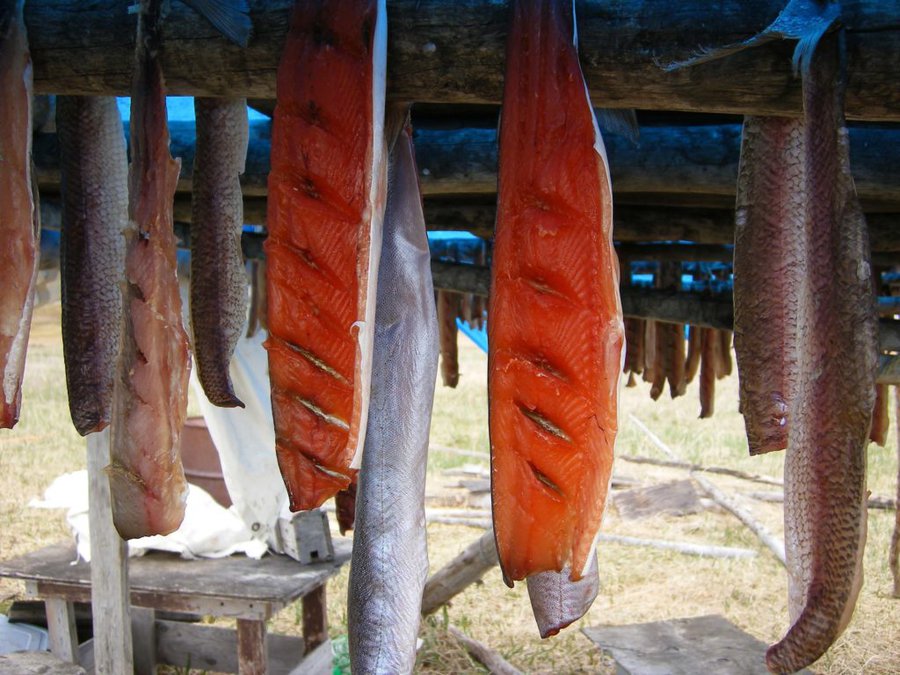
Drying fish: Pike (left & right) and trout (middle) hang from a wooden rack. Photo: Western Arctic National Parklands
When people go fishing, they know they have to consider all of these factors, she says. “However, if the regulations conflict with your chosen time and place, all of a sudden you are not able to use your knowledge needed to make that decision.”
Trade has also become more difficult. “You can’t easily move the food between communities and especially not between countries,” says Tiina Kurvits, an ecosystem management expert with the research centre GRID-Arendal in Norway. “Even though there are lots of cultural links between, say, Canada and Greenland, if you want to trade food across those boundaries, then governments’ food inspectors need to be involved”, she explains.
Traditionally, people were able to move food seamlessly between countries “because there wasn’t really a border as such, the border is an artificial thing”, she adds.
Strong traditions face new challenges
“People who live north of the Arctic Circle don’t just get food from stores”, says Gary Kofinas, professor at the University of Alaska Fairbanks. “Their traditional way of life harvesting wild food is alive and well. Many people think of subsistence as a kind of survival strategy, but I don’t think it’s that simple.”
Kofinas says that the joint nutritional and cultural values of traditional food remain important, even though people may no longer rely on it for having enough food to eat: “When we think about the North American Arctic, hunting, fishing, and gathering are still an important source of food but also a cherished connection to cultural identity.”
Researchers who studied the sharing economy among Indigenous populations of the North found that exchanging food, goods, and knowledge keeps communities strong in the face of climate change or industrialization. The real threat lies elsewhere: it’s the loss of important figures in the community and the erosion of cultural ties between families that increases vulnerability when food is scarce.
“When we think about the North American Arctic, hunting, fishing, and gathering are still an important source of food but also a cherished connection to cultural identity.”
Gary Kofinas
In a town, where more people have Indigenous rights to hunt and a societal system that maintains those skills, traditional foods may be more readily available. But researchers have found that poverty still limits people’s access to food, as they cannot afford to purchase it. Elsewhere in the Arctic, communities might struggle to gather food and maintain access to hunting rights, even as imported groceries have yet to appear.
“Dangerous resilience”
The combination of environmental changes, globalization and new regulations is challenging the resilience of Indigenous Arctic people. Traditional practices such as hunting, fishing, or berry picking could barely feed the sparse population of the pre-Industrial age. Now human settlements are growing, mainly fueled by the oil business, and what once kept people alive and healthy, albeit at times hungry, is not enough anymore.
Although the food system has provided for people for a long time, even if only barely, working to strengthen its resilience as it is and has been may not be a good thing anymore. Transforming a society sometimes requires overcoming communities’ resistance to new ideas and approaches. “If I am resilient to change and I am stuck in a bad place in life, I may remain poor no matter what other development or efforts are initiated,” notes Kofinas. “Think about resilience as a condition that can be good or bad depending on the situation.”
His observations are echoed by Ilan Kelman, a reader in risk, resilience, and global health at University College London. Kelman runs Many Strong Voices, a program that matches the stories of Indigenous people in the Arctic and in the Pacific Small Island Developing States (SIDS). Both groups are extremely vulnerable to climate change and food insecurity, and so far they show similar coping mechanisms.
“In the SIDS as well as in the Arctic, Indigenous people understand and rely for food on the [local] environment, which is part of their culture and their identity”, he says. “That does not necessarily mean malnutrition or poor health, but it did mean that you were always hungry.”
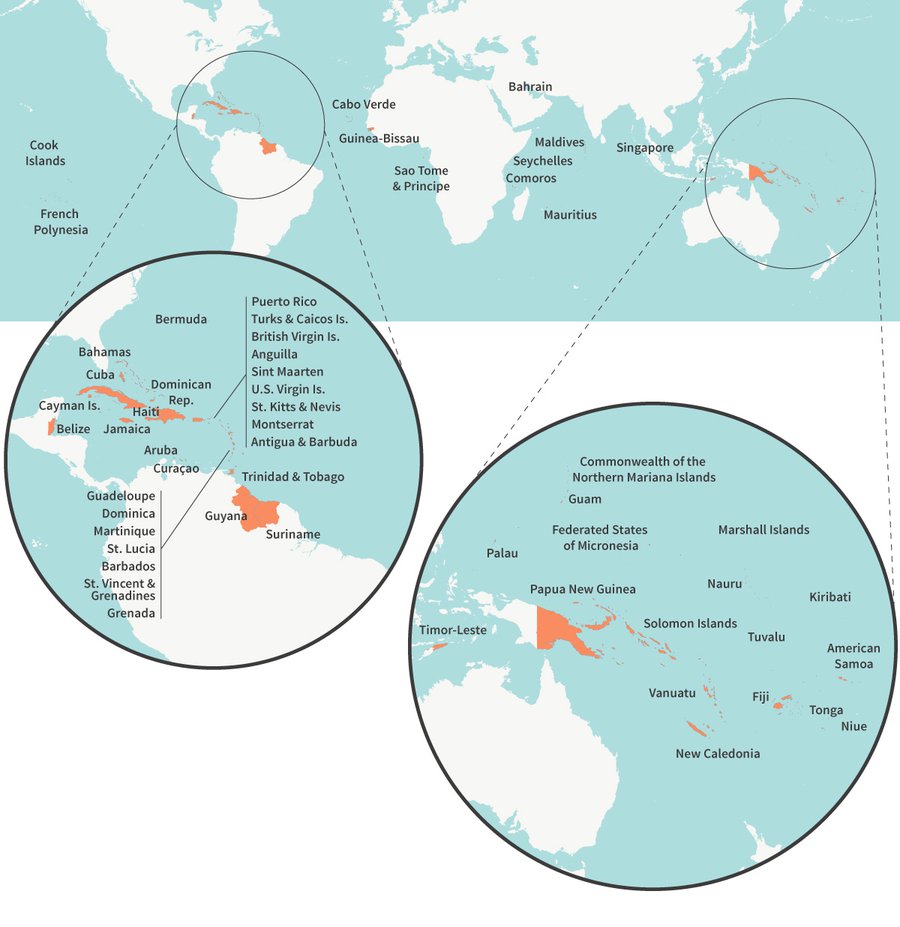
Map: E. Wikander/Azote (adapted from the UN Sustainable Development Knowledge Platform, https://sustainabledevelopment.un.org/topics/sids).
Industrialization and the cash economy have partially reduced hunger in the small island states of the Pacific and the communities north of the Arctic Circle, but at the expense of good health. By managing hunger, however, the risk is that these solutions are seen as “good enough”. “These systems are creating a damaging form of resilience, introducing a double burden of malnutrition and obesity”, says Kelman.
That’s why food security is complicated, Kelman notes, “because resilience doesn’t necessarily mean positive, or healthy. … No one starves, but everyone remains poor”.
Self-organizing harmony
In their conversations online and through their demonstrations in the streets of Iqaluit, Papatsie and the members of the Feeding My Family community share a sense that the vicious circle of food insecurity is not going to be easy to break.
As the demonstrations gained momentum, Papatsie was being interviewed by a local reporter when she realized she could not find the Inuit word for “protest”. This is because, she says, “one of our traditions is to live in harmony. You know, our people had to survive for hundreds of years in very harsh environments and one of the ways in which they did it was by helping each other.”
But in 2012, Papatsie could not stick to her traditions. She decided that peaceful protest was the only way to raise awareness of the growing hunger in Iqaluit and the surrounding territories.
Meanwhile, the lessons passed on for millennia among the native people of the Arctic live on in a different shape, and fill the governance gap that underpins food insecurity in Iqaluit: “For the northerners, for us to make it better we have to make our lives better. One of the ways is through education,” Papatsie wrote on the pinned post of her Facebook group, also emphasizing the importance of experimenting to find new solutions. “If it doesn’t work, then try something different and keep on trying. Our ancestors kept on trying and trying, they never gave up and that is why we are alive today. We cannot rely on the government, on Inuit organizations or other organizations, we have to make the changes ourselves to change how it is up here.”
Self-organization is a crucial strength of the Northerners. Although globalization and climate change now threaten their way of life and identity, tools like social media have made advocacy and action easier and faster. Sharing knowledge may help them learn together how to navigate a new, difficult food landscape, just as their ancestors did.
This article was originally published by Rethink.
